The 4 Must-Train Muscles for Big Arms
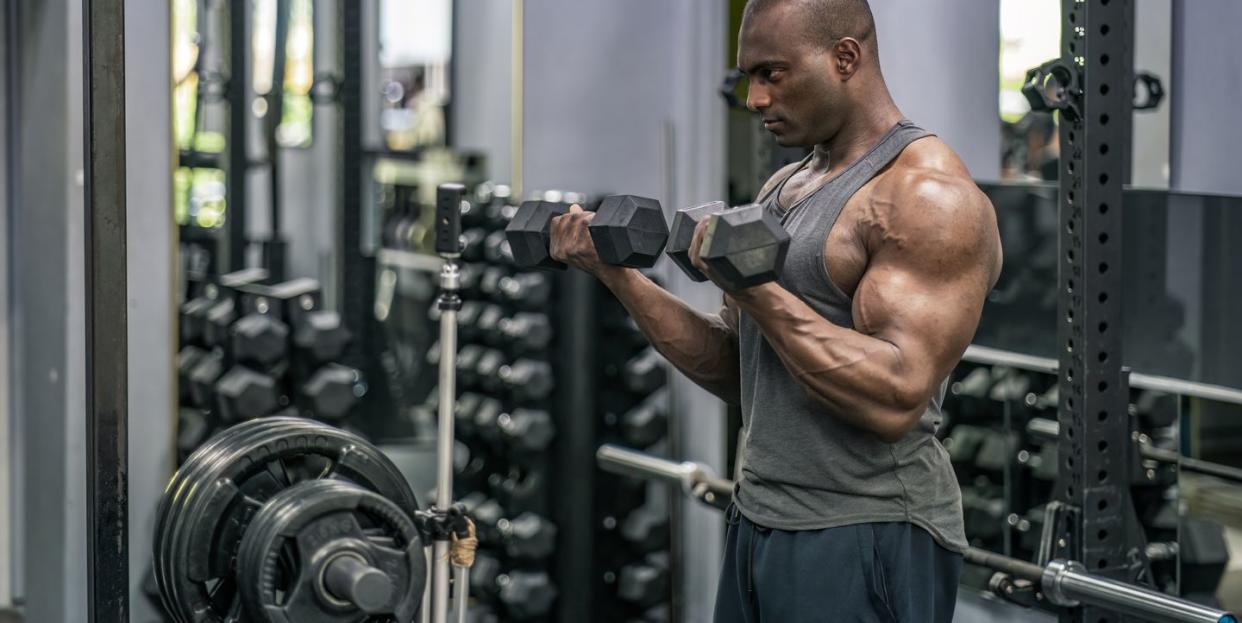
The following is an excerpt from the new Men's Health training guide 90-Day Transformation Challenge: Arms. In one volume, you'll get all the tools you need—information, a nutrition guide, and workouts—to build your arms in just 3 months.
WHY ARE PEOPLE so drawn to developing muscular and strong arms? It’s because arms are so prominent and visible. Unlike abs or even legs, which are very often covered by clothes, your arms are frequently exposed. But for the most part, if you look around your local gym, you’ll see people just doing curls until they are blue in the face and wondering why they haven’t built Schwarzenegger-sized arms.
Knowing how your arms work will make a big difference in your training. You’ll be able to figure out how to diversify your programming and pin- point areas that you might be neglecting.
Let’s take a deeper look at the muscle groups that are involved with your arm training.
Shoulders
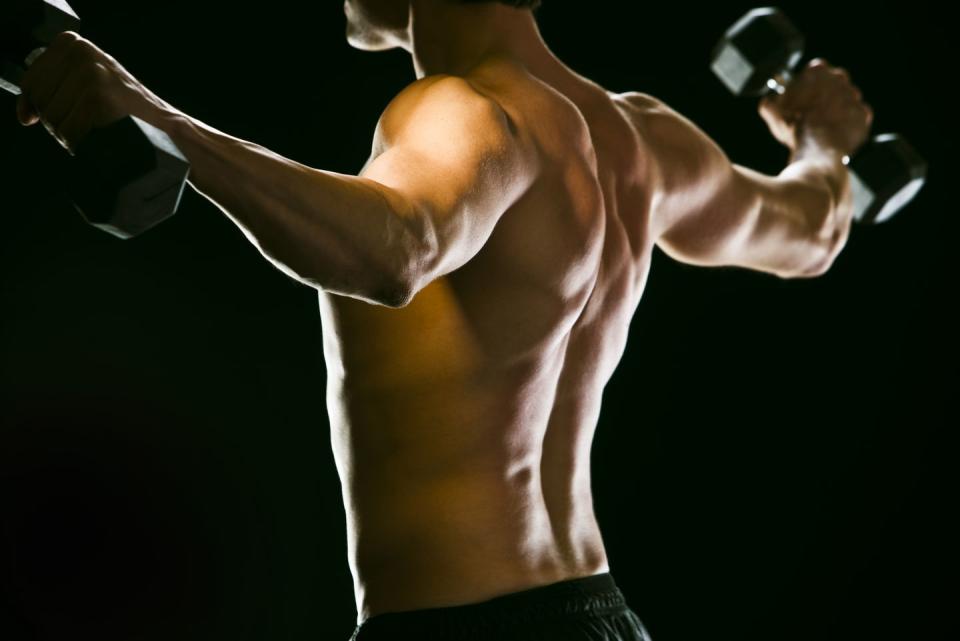
Technically, shoulders are known as the deltoids, and they’re a major contributor to all upper-body movements. The large triangular design of the muscle, spanning the top part of the arm, adds bulk to your appearance and defines the top part of the arm. The deltoid muscle has three parts: the anterior, the medial/lateral, and the posterior.
All three portions play a key role in maintaining stability in the shoulder joint, which is also known as the glenohumeral joint. This is where your upper arm bone, or humerus, meets the scapula, part of your back’s bone structure, to create the ball- and-socket joint that is your shoulder.
The whole area, or shoulder girdle, allows for upper body movement. The relationship between your shoulder blades and your arm is somewhat fluid. For the sake of this program, we will focus on the musculature of the shoulder that surrounds the glenohumeral joint and defines the top side of your arms. At the end of the program, you will have 25 shoulder exercises to make you stronger in pushing, pulling, and carrying patterns.
Delt Details
• Anterior: The front side of the shoulder, responsible for raising your arm upward in front of your body.
• Medial/Lateral: The outside portion of the shoulder that has abduction duties—it lets you raise your arm out to your side.
• Posterior: The back side of the shoulder, it’s responsible for extending your arm.
Biceps
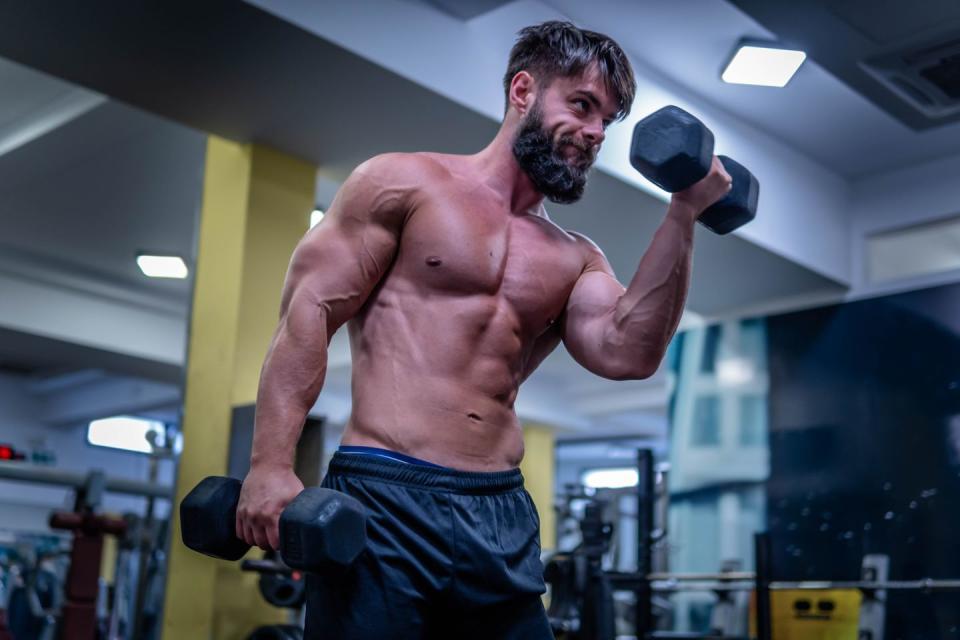
You might know the biceps and the triceps are both part of your upper arm, but do you know the difference between them? The bi- and tri- refer to the number of heads each muscle has, and this affects how we work each muscle.
When most people think of the biceps, they are thinking of the biceps brachii. It consists of a long head (outside of your arm) and a short head (inside of your arm). These two heads of the muscle create the biceps—the muscle we want to build up through training.
The Brachialis
But most people aren’t aware of the big muscle that lies deep within the biceps brachii and provides a lot of size and strength to the arm. It’s the brachialis muscle, the prime flexor of your arm. This muscle gets help from the biceps brachii when your hands are in the supinated (palms up) position. When your hands are palms down (pronated), the brachialis is isolated and has to work without the help of its neighboring muscle.
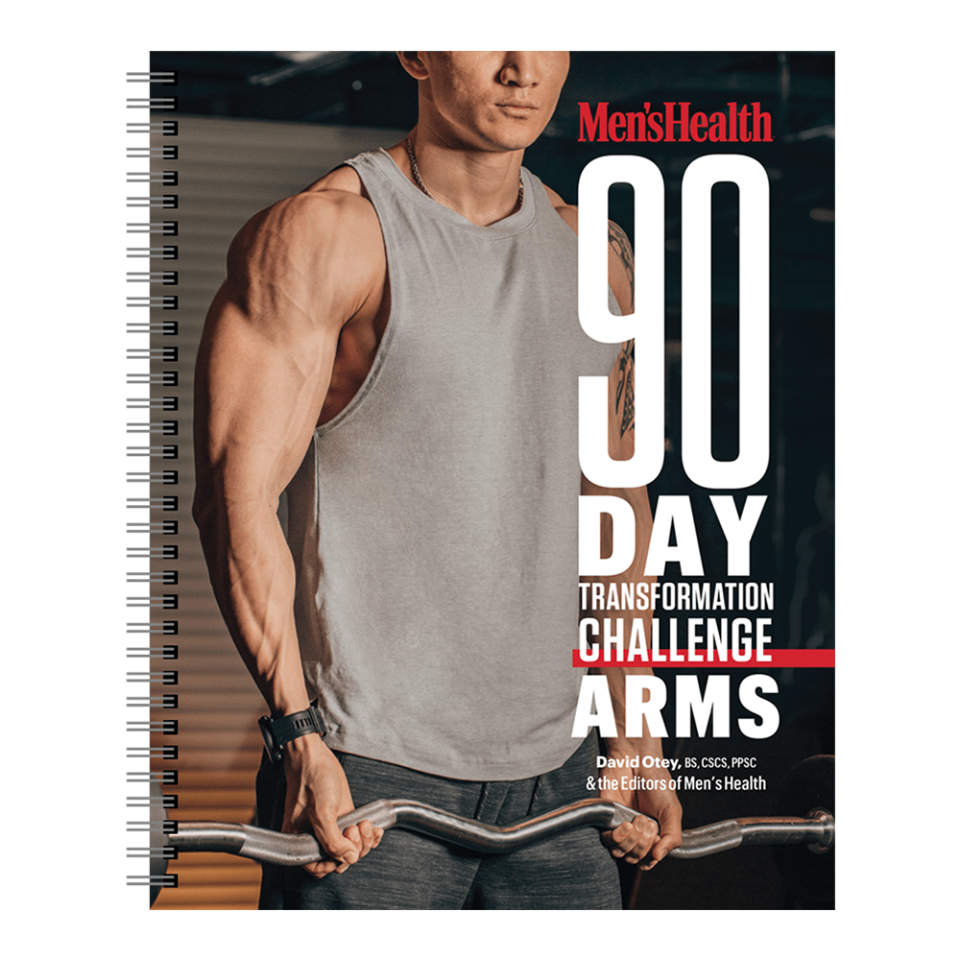
90-Day Transformation Challenge: Arms
$26.95
menshealth.com
You can develop your biceps muscles simultaneously using a combination of curls with varying palm positions. We will be addressing that by employing two different hand positions each week. This variation gives you the necessary changes for muscle development while eliminating the repetitive stress of doing the same move over and over on a weekly basis.
Triceps
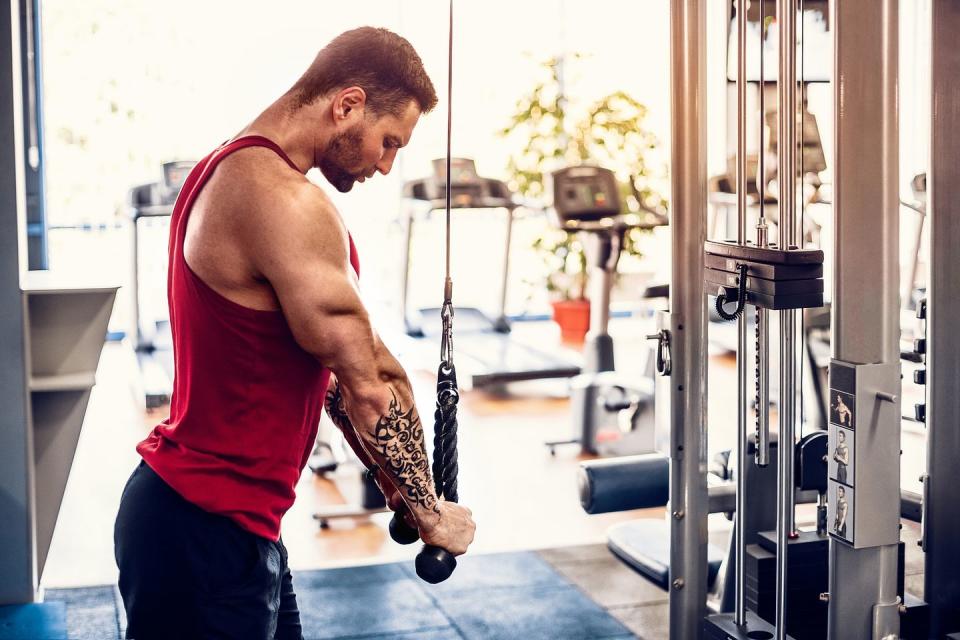
The biceps muscle has two heads, and the triceps muscle has three—the medial, lateral, and long. The triceps brachii is a main extensor of the elbow. All three heads extend the elbow, but only the long head of the triceps helps with shoulder stability, because it attaches to the shoulder blade.
If you are looking to build some sizable arms, the triceps are your ticket to mass. A 2007 study found the triceps accounts for about 55 percent of the muscle mass in the arm while the biceps accounts for about 30 percent.
The triceps assists in pushing motions by the upper body because of its main function, elbow extension. For triceps development, you get the luxury of hitting the triceps when you are doing pushups and shoulder presses without adding potential overuse due to its frequent use.
Because of its importance in pressing motions, the program addresses the triceps not just from its aesthetic perspective but also from its ability to move heavy weight. We will adjust hand position and use different equipment to improve its capabilities with shoulder stability, elbow extension, and strength through all positions of the muscle. Triceps don’t just give you strong arms. They make you strong, period.
Forearms
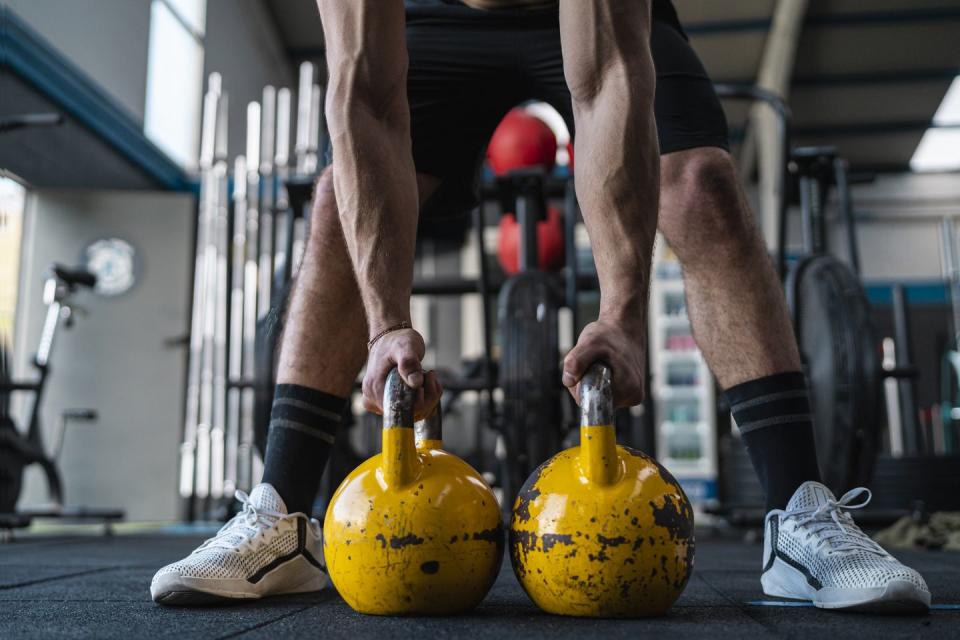
Don’t sleep on the forearms when it comes to building strong arms. And strong arms start with a strong grip. As they say, you can only lift as much as you can hold.
There are 20 muscles in the forearm, so trying to pinpoint each flexor and extensor in our program isn’t very efficient. But for this program, we should single out the brachioradialis muscle.
The brachioradialis is the muscle closest to the surface of the skin on the thumb side of the forearm. It’s commonly known as the “beer drinker’s muscle” because it is prominent when you’re gripping something, like a pint glass, in the neutral hand position. It commonly fatigues during curling and pulling motions.
Grip is a focus in this program because we want the entire arm to be strong. Different grip positions will be aligned with biceps, triceps, and shoulder movements, but the real work happens with loaded carries. You will see different loaded movement options that will continually test your ability to move with a weight in your hand, a skill that will easily transition to your everyday life.
You Might Also Like

